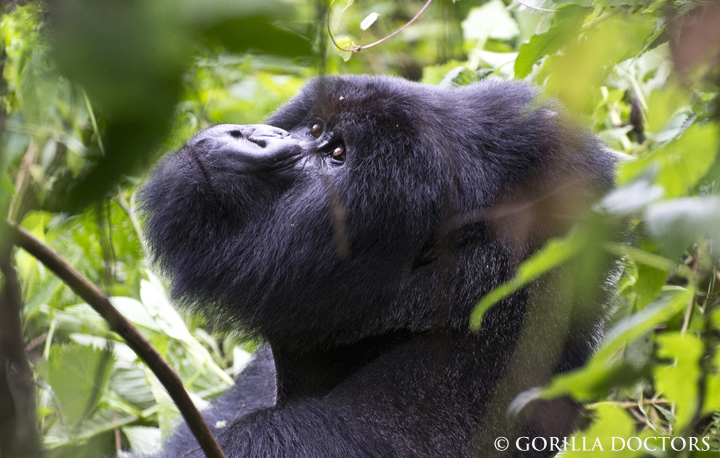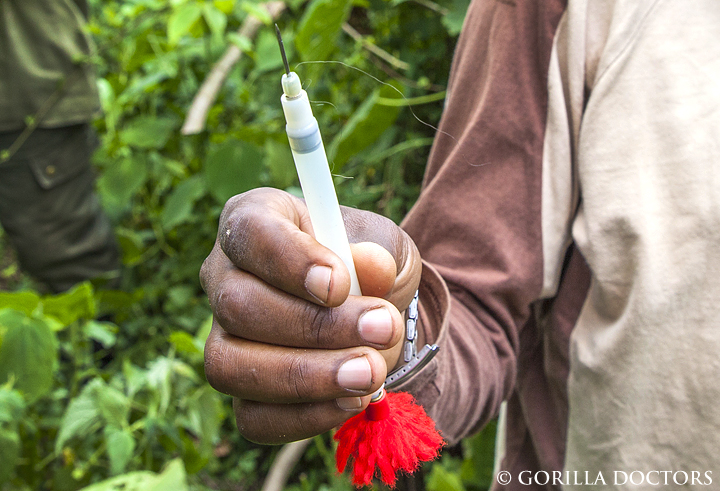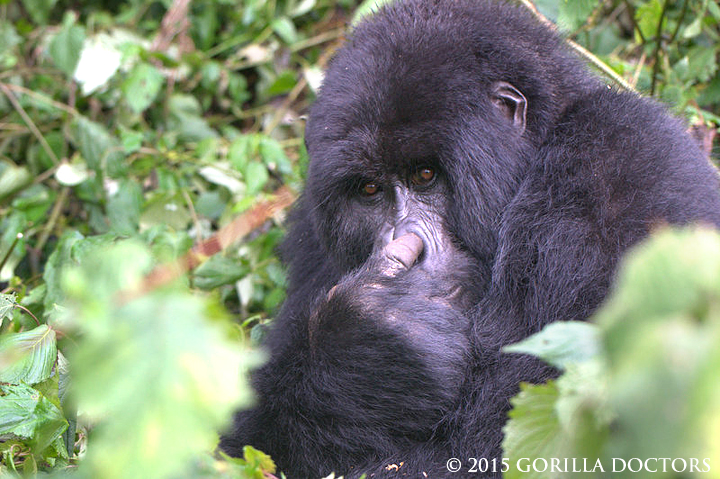Silverback Munyinya Treated for Respiratory Infection
By Gorilla Doctors Staff on Wednesday, August 12th, 2015 in Blog.A respiratory disease outbreak has been spreading through Rwanda’s Hirwa group during the last week and Drs. Noel and Julius are closely monitoring this group of mountain gorillas in Volcanoes National Park. Munyinya, the leader and only silverback in the group, had a productive cough and nasal discharge and was lethargic and still laying in his night nest when Dr. Noel arrived to the group on the morning of August 6. Our Rwanda Field Vet made the decision to dart Munyinya with antibiotics to help him overcome his illness.
Humans and gorillas share approximately 98 percent of their DNA. This close genetic similarity makes gorillas susceptible to many of the infectious diseases that affect people, such as respiratory disease. Infectious disease is the second most common cause of death in mountain gorillas (traumatic injury is the first). “The type of infection we see most frequently is respiratory, which can range from mild colds to severe pneumonia,” said Dr. Linda Lowenstine, Gorilla Doctors Veterinary Pathologist who has studied gorilla diseases for more than 25 years.
In 2009, a mother and infant in Hirwa group died as a result of a human metapneumovirus. During this particular outbreak, all but one of the twelve group members exhibited symptoms of respiratory infection: runny nose, coughing, lethargy. As in humans, typical respiratory illnesses usually start as a viral infection, which cannot be specifically treated with antimicrobial medicines. Most gorillas with viral respiratory disease recover on their own, but others deteriorate and develop secondary bacterial infections, causing even more severe respiratory disease, like bronchopneumonia, which can be fatal. Fortunately, bacterial infections can be treated if caught early enough.
As of August 11, Dr. Noel reports that there are only a few group members that still have minor symptoms and Munyinya’s condition is much improved. An adult female in the group who gave birth to her first infant last Saturday is also exhibiting symptoms, though Dr. Noel says that she is improving and her infant is visually in good health.
It is particularly important that we do all we can to help boost Munyinya’s health: he is the only silverback in the group and if he were to die, a new silverback would move in and take control, exposing the infants in the group to potential infanticide.
We are seeing respiratory disease become more prevalent in the mountain gorilla population: within the last month, our vets have been monitoring respiratory disease outbreaks in Ntambara and Titus groups in Volcanoes National Park and Lulengo group in Virunga National Park.
Hirwa group will continue to be under intensive veterinary monitoring until the outbreak is fully resolved. Learn more about infectious disease in gorillas here.


 Donate
Donate


